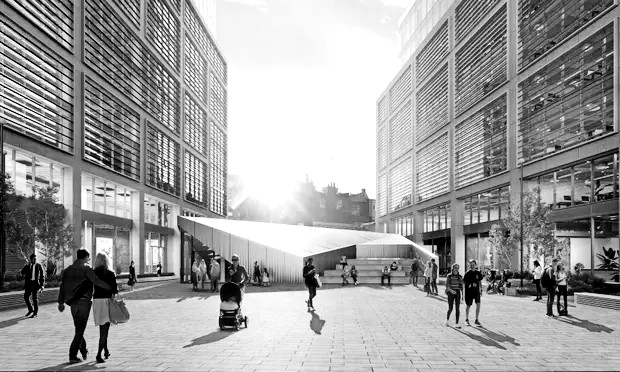Museum of Shakespeare in Shoreditch to open in 2024 on-site of the playhouse that staged earliest performances
Theatre lovers will be able to walk across the Elizabethan stage where Shakespeare presented Romeo and Juliet and Henry V at a London museum installation that uses the latest AI technology.
The Museum of Shakespeare, due to open in spring 2024, will be set within the remains of the Curtain Playhouse – one of London’s earliest theatres.
Based in Shoreditch, the playhouse was a social and cultural centre during Shakespeare’s time, hosting a variety of activities from plays to fencing matches.
An archaeological excavation of the site between 2011 and 2016 revealed its remains, with the Museum of Shakespeare now making them publicly accessible for the first time – enabling scholars and the public to learn more about the site and its history.
Set in the year 1598 and located 3 metres underground, the museum will retell the life of Shakespeare through “dynamic experiences, innovative theatrical technology and archaeological discoveries”, organisers said.
The museum experience will include original objects alongside multisensory experiences and a chance to walk on the stage where Shakespeare presented his plays.
Standing over the remains of the stage will be a projected reconstruction of the playhouse, allowing visitors to stand in the heart of the theatre experience, “whilst AI technology will place guests in animated performances and scheduled workshops”.
Heather Knight, senior archaeologist at Museum of London Archaeology, said: “Leading the excavations on the site of the Curtain, one of London’s earliest and longest-lived playhouses that have transformed our understanding of early modern performance, has been an immense privilege and I am very much looking forward to the next chapter in the history of the Curtain”
The Curtain Playhouse opened in 1577. It was the main venue for Shakespeare’s company before the Globe was built and was home to Shakespeare’s earliest performances – Romeo and Juliet and Henry V are believed to have been debuted there.
Along with the stage, evidence of tenement buildings – essentially blocks of flats – that were erected after the closure of the playhouse were also found, alongside artefacts including money box tops and tobacco pipes.
It is one of only a handful of sole-purpose Elizabethan playhouses clearly identified as an archaeological monument in London, and one of the earliest surviving examples of a non-polygonal theatre.
“It’s fantastic that Elizabethan London’s longest-lived playhouse, which has so many stories to tell about creativity and opportunity, can adapt once more to show how performance worked, why it mattered, and why it still does today,” said Dr Callan Davies, author of What Is a Playhouse?
He added: “It offers the chance to meet Shakespeare in the playful culture of his age as well as ours, amongst businesswomen and ambitious standup comics, innovative craftspeople and bold storytellers.”
The Museum of Shakespeare has been created by Bompas & Parr in collaboration with Museum of London Archaeology and Historic England.
It will be housed within The Stage development, delivered by Cain International alongside McCourt Global, Galliard Homes, Vanke, Investec and the Estate Office Shoreditch.
Source: The Guardian


Recent Comments